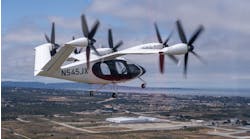Japan Manufacturers in Post-Tsunami Rethink
When small, unheard-of factories on Japan's tsunami-hit coast were knocked out of action, few people would have predicted that it would cause the global car industry to come screeching to a halt. But that painful experience has quickly forced manufacturing giants to re-think their complex web of globalized production.
The crippling of thousands of workshops in the northeast by the quake of last March or flooding by the monster tsunami it spawned did not at first appear to be a disaster in itself.
This was Japan's hinterland, not the economic and cultural hub of Tokyo or the industrial base around Osaka.
But unexpected shockwaves soon began to ripple throughout the country and around the world when the small subcontractors that supply globally-famous automotive and electronics brands found themselves unable to operate.
What giants of industry such as Toyota suddenly realized was that these little-known factories had virtual monopolies on particular electronic components or on the manufacture of a specific piece of metal.
Toyota lost production at just three of its own plants, but 600 of its suppliers were hurt. A week later, 500 components were still missing and some global production lines ground to a standstill.
Renesas Electronics became emblematic of this paralysis. The company has 40 percent of the global share of microcontrollers used in vehicles.
With a logjam that threatened to crimp Toyota's production by up to 2 million vehicles, the automaker was among companies that mobilized its staff to help Renesas get back on its feet.
At any one time, 2,500 people were laboring to get the company's plant at Naka up and running, with the first microcontrollers rolling off the production lines just three months after disaster struck -- nine months sooner than expected.
A similar story was repeated at small out-of-the way factories all along the stricken coast and the results were impressive.
Toyota managed to limit its lost production to just 370,000 units while electronics maker Canon was back at full capacity in late April. Entertainment giant Sony, which suffered damage at ten plants, was operating normally by the end of May.
"The recovery at these firms is somewhat astonishing given that in other less organized or less well managed companies we would have seen far greater and lengthier shutdowns," said Bharat Kannan, chief strategy officer at Aon Risk Solutions, Japan.
But while the recovery may have been quick, the losses were still heavy.
Insurance companies estimate that firms collectively took a hit of anything up to $80 billion in lost earnings, in addition to any capital costs incurred from damage.
The scale of these losses -- and the fact they were caused by a natural disaster that could easily be repeated -- means that firms have become a little wary of Japan as a place to manufacture their goods, says Ivan Tselichtchev, an economist at the University of Niigata.
"Japan will never again be what it was before March 11," he told AFP. "The rising probability of new big quakes is a new major risk factor, weakening the countrys attractiveness and competitiveness as a place to do business."
In a bid to mitigate these risks, companies are diversifying their suppliers and trying to get to know just how far the supply tail stretches.
"Before the disaster, we knew about our first tier suppliers but we didn't know about 2nd, 3rd or 4th tier suppliers," said Masami Doi of Toyota. "Since the quake, we are trying to be able to visualize everything, including these 3rd and 4th tiers" that are far removed from the company.
And that is no mean feat for a manufacturer that has connections to more than 100,000 different firms in Japan alone.
However, it has no choice: the tsunami proved that it needs to know where everything is coming from and it needs to widen its network of suppliers.
It also needs to bend its golden rule of "Just In Time" manufacture, and look to keep larger inventories.
"For some critical parts, we need to have bigger stocks," said Doi.
"We do it if it doesn't raise the cost. We do it for small parts which don't need a lot of space and that can be kept in stock for a long time, for example semiconductors," he said.
Some companies have looked to space out their operations to avoid the fairly localized effects of even a big earthquake.
"We are securing multiple supply routes and engaging non-Japanese companies, as well as trying to secure a big geographical spread for our own production plants," said a spokeswoman for semiconductor maker Murata Manufacturing.
Since the disaster, businesses are making plans to push "more production abroad and establish backup sites overseas as well as increasing cross-border mergers and acquisitions activity," said Aon's Kannan.
Renesas says it has reconfigured its structure to allow around 80 percent of its microcontroller product range to be manufactured at any of a number of factories, and is aiming to raise that figure to 90 percent.
"We want our customers to know that there is so much depth in our redundancy and in our recovery plans that if another disaster struck, the goal is that they would not see an impact on their supply," said a company spokeswoman.
Copyright 2012, Agence France-Presse
See Also:
"Japan's Steel Industry Assesses Damages From Tsunami"
"Japan Quake, Tsunami Could Hit Global Production"



